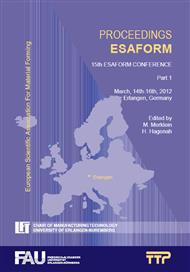p.1353
p.1359
p.1365
p.1371
p.1377
p.1383
p.1391
p.1397
p.1403
Design an Apparatus for Obtaining to High Precision Surface of Miniature Parts Based on Magnetized Abrasive Grains Finishing Process
Abstract:
Obtaining to high quality surfaces of industrial parts is an important manner for manufacturing involves. Different finishing process are capable to providing the require surface roughness in most cases, considering that, in some special parts, depending on shape, material and dimension of parts, the prevalent methods are limited, especially in finishing of sculptural and curvilinear surfaces. In this research, a new applied apparatus is represented based on magnetized abrasive grains finishing process. In this way, abrasive grains gathering around a rotational cylindrical tool thanks to a permanent magnetic field and work-piece, which usually is a formed thin metal sheet, located on a rotary table. Therefore, coinciding of those motions providing the require machining forces for finishing of surface without any physical contact between tool and work-piece. Presented process may carry out dry and wet in case of changing the main machining parameters such as: material and size of abrasive grains, tool and work-piece surface gap distance, tool and/or table rotational speed (r.p.m) and work-piece material. The recommended process has remarkable advantages such as: non-contact surface finishing, high finishing of non-flat surfaces, no need to clamping for work-piece because of low machining forces, responsibility for finishing of a wide range of materials except magnetizable parts, low machining costs and easy set up. This method has a lot of applications in production of optical lens, orthopedic prosthetic components and jewellery. For approve of the designed apparatus advantages, relative to other existed MR fluid machining system, some samples of very thin complex formed sheet have been successfully polished.
Info:
Periodical:
Pages:
1377-1382
Citation:
Online since:
February 2012
Authors:
Price:
Сopyright:
© 2012 Trans Tech Publications Ltd. All Rights Reserved
Share:
Citation:


